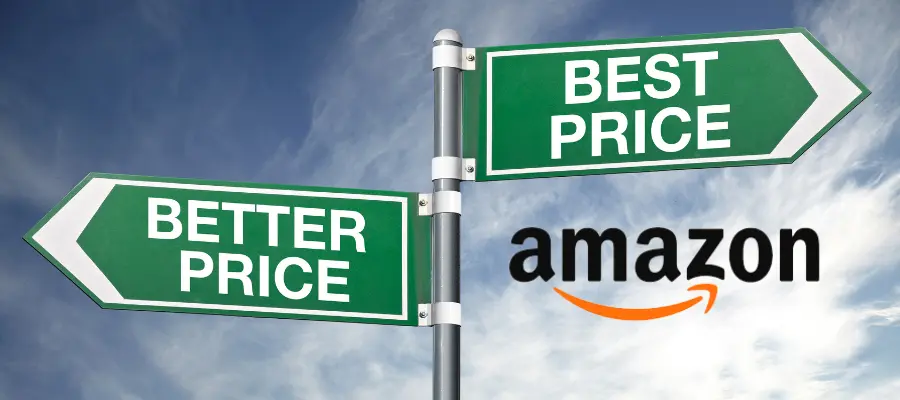In the fiercely competitive landscape of e-commerce, manufacturers are often keenly interested in monitoring how their products are priced by retailers. MAP (Minimum Advertised Pricing) monitoring becomes a crucial element in ensuring that the manufacturer's suggested prices are adhered to across various retail channels like Amazon marketplaces. Let's explore how manufacturers can leverage MAP monitoring tools, with a specific focus on AmzMonitor, to gain insights into how their products are priced by retailers.
Understanding the Manufacturer's Perspective
For manufacturers, maintaining control over the pricing of their products is essential to uphold brand integrity, protect profit margins, and nurture positive relationships with retail partners. MAP monitoring serves as the mechanism through which manufacturers can keep a watchful eye on how their products are priced in the market.
In the dynamic world of e-commerce, manufacturers now have the flexibility to closely monitor their products on Amazon marketplaces with the help of AmzMonitor. Unlike traditional monitoring tools, AmzMonitor focuses exclusively on Amazon listings, conducting scans at intervals ranging from 1 hour to 24 hours. This real-time monitoring approach provides manufacturers with instant notifications of any changes, allowing for swift adaptations and informed decision-making.
Reiterating the Challenges of Manual MAP Price Monitoring
Undoubtedly, the challenges of manually monitoring MAP price violations are substantial. Even when dealing with a modest number of products and sellers, attempting to stay vigilant over resellers can be a daunting task. The inevitability of violations slipping through the cracks looms large.
Consider a scenario where one seller breaches your pricing policy, triggering a chain reaction among others aiming to stay competitive. In such instances, determining the initial culprit becomes a Herculean task. Moreover, if these violations occur on different pages, the question arises: Are you monitoring a diverse array of sites to pinpoint the origin of this ripple effect?
Focusing solely on your most critical SKUs doesn't alleviate the struggle. For most brands, manual MAP price monitoring proves too intricate to manage effectively. Human limitations in multitasking across numerous platforms become evident, prompting the realization that financial resources could be more judiciously allocated—perhaps toward solving creative analytical challenges. In essence, a robot could seamlessly fill the monitoring role, offering a superior and scalable solution for the task at hand.
The inefficiencies of manual MAP price monitoring underscore the imperative need for an automated and scalable alternative—entering the realm of technology to revolutionize the way brands protect their pricing policies.
Why AmzMonitor Is the Manufacturer's Ally?
- Flexible Monitoring Intervals: Manufacturers can choose monitoring intervals that suit their preferences, ranging from hourly checks to daily scans. This flexibility ensures that manufacturers stay informed about pricing changes on Amazon as frequently as needed.
- Real-Time Notifications: AmzMonitor notifies manufacturers the moment a pricing change is detected, ensuring they have the most up-to-date information at their fingertips. This real-time approach empowers manufacturers to respond promptly to market fluctuations.
- Adaptive Decision-Making: Armed with timely insights from AmzMonitor, manufacturers can make adaptive decisions based on the latest pricing data. This agility enables manufacturers to navigate the competitive landscape and adjust strategies as needed.
How Manufacturers Can Leverage AmzMonitor?
- Stay Informed and Updated: Manufacturers can leverage AmzMonitor to stay informed about how their products are priced on Amazon, ensuring they are always up-to-date with the latest market dynamics.
- Swiftly Adapt to Changes: With real-time notifications, manufacturers can swiftly adapt to pricing changes, whether it's adjusting their pricing strategy or engaging in discussions with retailers.
- Optimize Manufacturer-Retailer Relationships: The data obtained from AmzMonitor can be used to foster transparent and collaborative relationships with retailers, promoting a mutually beneficial partnership.
- Uphold Brand Integrity: By actively monitoring and responding to pricing changes on Amazon, manufacturers can uphold the integrity of their brand and ensure consistent pricing across the platform. Over time, it establishes a track record of vigilance, discouraging sellers from attempting policy violations.
Conclusion
AmzMonitor emerges as the ideal tool for manufacturers seeking flexibility and real-time insights into their product pricing on Amazon. With the ability to choose monitoring intervals and receive instant notifications, manufacturers can navigate the e-commerce landscape with agility and maintain a competitive edge.
Empower your manufacturing endeavors with AmzMonitor, where flexibility meets timely precision.
Happy monitoring with AmzMonitor!


